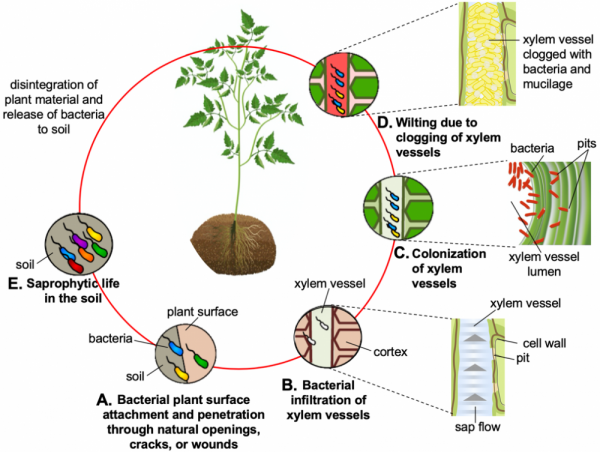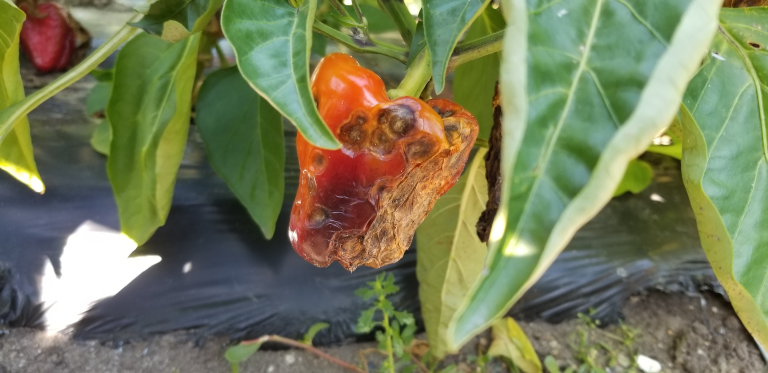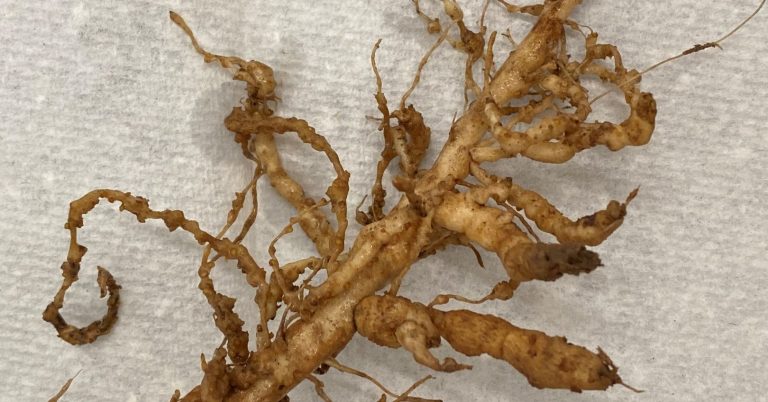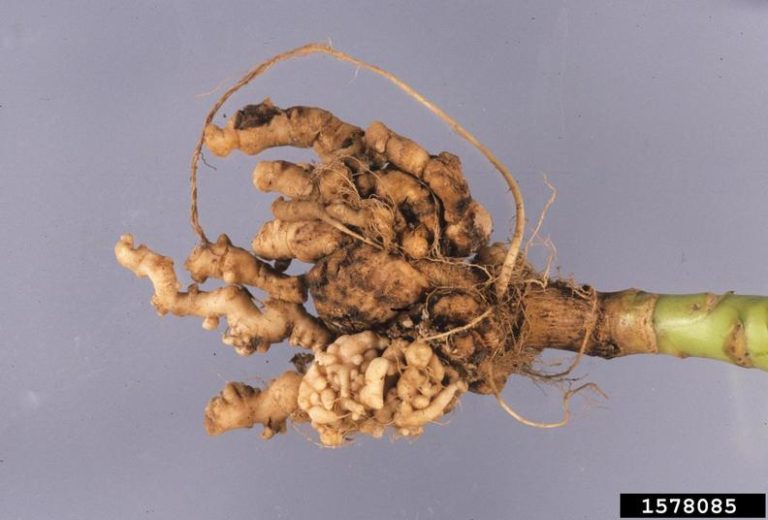Introduction
Bacterial wilt is one of the most devastating soil-borne diseases affecting vegetables worldwide, including Nepal. The causal agent, Ralstonia solanacearum, is a highly adaptable and versatile bacterium that infects over 200 plant species, including economically important crops like tomato (Solanum lycopersicum), potato (Solanum tuberosum), eggplant (Solanum melongena), and pepper (Capsicum spp.). In Nepal, vegetable farming plays a critical role in food security and rural livelihoods, making bacterial wilt a significant threat.
In this post, we will delve into the pathogen’s biology, its specific and comparative symptoms in vegetables, the disease cycle, and the management strategies in the context of Nepalese agriculture. This article has been optimized for search engines with the RankMath SEO plugin and emphasizes unique content to avoid plagiarism.
Taxonomy and Distribution of Ralstonia solanacearum
Ralstonia solanacearum belongs to the family Burkholderiaceae within the class Betaproteobacteria. It was previously classified under the genus Pseudomonas, but molecular studies revealed significant genetic differences, leading to its reclassification.
Globally, R. solanacearum has a broad distribution, particularly in tropical, subtropical, and warm temperate regions. It thrives in humid, warm environments, which makes regions like Nepal’s Terai and mid-hill regions particularly vulnerable. High temperatures (25°C–35°C) and abundant moisture are ideal for the bacterium’s growth and spread. The disease is not only prevalent in Nepal but also poses serious threats to vegetable production systems across Asia, Africa, and Latin America.
Biology of Ralstonia solanacearum
Ralstonia solanacearum is a Gram-negative, rod-shaped bacterium that moves using a single polar flagellum. The bacterium infects plant roots, moving upward through the xylem, the plant’s water-conducting tissues, causing a systemic infection that leads to wilting. It survives in the soil, plant debris, and water, making its control particularly challenging.
Pathogenic Races and Biovars
- Race 1: This race primarily infects solanaceous crops like tomato, potato, and eggplant. It is prevalent in warm climates, making it the most common race in Nepalese agriculture.
- Race 2: Targets bananas and plantains and is less common in Nepal.
- Race 3: Infects potato and some solanaceous plants and is known for its ability to survive in cooler temperatures. Race 3 has been a concern in temperate regions, including higher altitudes in Nepal.
Additionally, R. solanacearum is classified into biovars based on its ability to utilize different carbon sources. Biovars 3 and 4 are commonly found in Asia and are highly pathogenic to a wide range of crops.
Host Range
The host range of R. solanacearum is extensive. While solanaceous crops like tomato, potato, and eggplant are the most severely affected, the bacterium also infects a variety of other vegetable crops, including:
- Peppers (Capsicum spp.)
- Cabbage (Brassica oleracea)
- Cucumber (Cucumis sativus)
- Tobacco (Nicotiana tabacum)
This wide host range increases the complexity of managing bacterial wilt in diverse vegetable cropping systems in Nepal.
Symptoms of Bacterial Wilt in Vegetables
1. Tomato (Solanum lycopersicum)
In tomatoes, bacterial wilt is often recognized by rapid wilting of the foliage, which may initially affect only a few branches but soon spreads to the entire plant. A distinguishing feature is the lack of yellowing in the leaves before wilting, in contrast to other wilting diseases like Fusarium wilt.
- Initial Symptoms: Early stages of infection often show as wilting during the hottest part of the day, with recovery at night. This intermittent wilting progresses rapidly, leading to permanent wilting within days.
- Stem Discoloration: A cut through an infected stem reveals brown vascular tissue, which may exude a milky white, slimy ooze when squeezed—indicative of bacterial infection.
- Comparative Symptoms: Fusarium wilt causes yellowing before wilting, while Verticillium wilt generally affects only one side of the plant. Phytophthora blight causes lesions on stems and fruits, unlike bacterial wilt, which affects the vascular system internally.

Source: Koppert

Source: Koppert
2. Potato (Solanum tuberosum)
Bacterial wilt of potato or Brown Rot was first reported in 1962 and was the second most important disease in Nepal after the blight. This disease is caused by the Race 3 or Biovar 2 of Ralstonia solanacearum bacterium.
Potatoes’ Bacterial wilt is difficult to diagnose early due to its often subtle symptoms, which may be confused with nutrient deficiencies or other wilting diseases.
- Wilting and Stunting: Affected potato plants may show gradual wilting and stunting. The disease can progress rapidly in warm, wet conditions, causing sudden plant collapse.
- Tuber Symptoms: A key symptom is the brown, discolored vascular ring inside the tuber. Upon cutting, the infected tuber often exudes bacterial ooze, which distinguishes it from other tuber rots.

Source: Plantwise

Source: Plantwise
3. Eggplant (Solanum melongena)
In eggplant, bacterial wilt starts with wilting of the youngest leaves, followed by a rapid spread of the wilt to the entire plant.
- Vascular Browning: A distinct characteristic is the browning of the vascular tissue, visible when the stem is cut. The wilt progresses quickly, leading to plant death within a short period.
Source: Plantwise
4. Pepper (Capsicum spp.)
Pepper plants are less commonly affected compared to tomato and potato, but when infection occurs, the symptoms resemble those in other solanaceous crops.
- Gradual Wilting: The initial symptoms are a slow wilting of the leaves, which worsens under hot and dry conditions. Vascular discoloration and stem browning can be observed when the plant is cut.

Source: Plantwise
Comparative Symptoms with Other Wilt Diseases
- Fusarium Wilt: This fungal disease causes more gradual wilting, often accompanied by chlorosis (yellowing) of the lower leaves. In contrast, bacterial wilt usually shows sudden wilting without preceding chlorosis.
- Verticillium Wilt: Unlike bacterial wilt, Verticillium wilt is more likely to affect only one side of the plant or a portion of the vascular system, and the vascular discoloration is lighter. No bacterial ooze is present when cutting the stem.
- Phytophthora Blight: Phytophthora also causes wilting, but it is often associated with stem lesions and fruit rot, which are not characteristic of bacterial wilt.
Disease Cycle of Bacterial Wilt
Understanding the disease cycle of Ralstonia solanacearum is critical for effective management. The bacterium survives in soil, water, and infected plant debris, making it a highly persistent pathogen.
Survival in Soil and Water
The bacterium can survive for extended periods in moist soils, especially under favorable conditions like warm temperatures and high moisture content. In irrigated fields, the pathogen can also spread through contaminated water. It can persist in water sources for months, which is a common problem in regions with poor irrigation infrastructure, such as parts of Nepal.
Infection Process
- Entry: The bacterium enters the plant through natural root openings or wounds caused by insects, nematodes, or cultivation practices. Once inside, it colonizes the xylem vessels, causing blockages that lead to wilting.
- Vascular System: The bacterium multiplies rapidly within the vascular tissues, producing large amounts of extracellular polysaccharides (EPS), which block the xylem vessels and inhibit water transport, leading to wilting.
- Dispersal: The pathogen can spread through soil movement, irrigation water, infected plant material, and contaminated farming tools. In Nepal, where smallholder farmers often share irrigation systems and tools, this mode of transmission is particularly concerning.

Source: eOrganic
Key Stages in the Disease Cycle
- Survival: Infected plant debris, contaminated soil, and water act as reservoirs of the pathogen.
- Root Infection: The bacterium enters plant roots through wounds or natural openings, aided by factors like high soil moisture and warm temperatures.
- Systemic Spread: R. solanacearum moves upward through the xylem, clogging the plant’s water transport system.
- Wilting and Death: The blockage of xylem vessels leads to rapid wilting and eventual plant death.
- Dispersal: The bacterium is released into the soil and water when the infected plant decomposes or is uprooted, continuing the cycle.
Factors Favoring Bacterial Wilt in Nepal
Several environmental and agricultural factors in Nepal contribute to the spread and severity of bacterial wilt in vegetables:
Temperature
The optimal temperature for R. solanacearum growth is between 25°C and 35°C, making the mid-hills and Terai regions of Nepal highly vulnerable. During the growing season, temperatures in these regions often fall within this range, facilitating the rapid spread of the pathogen.
Moisture
High soil moisture levels, particularly in poorly drained fields or during the monsoon season, promote bacterial growth and infection. The bacterium thrives in waterlogged conditions, and fields with poor drainage are at a heightened risk.
Soil Type
Soils with low pH and high organic matter content provide favorable conditions for R. solanacearum survival and multiplication. The acidity of some soils in Nepal’s agricultural regions can exacerbate bacterial wilt outbreaks.
Management Strategies for Bacterial Wilt
Effective management strategies for bacterial wilt caused by Ralstonia solanacearum in Nepal require an integrated approach, combining cultural, biological, and, where applicable, chemical controls. Due to the small-scale, fragmented farming systems and the subtropical to tropical climate in Nepal, the following strategies are particularly suitable:
1. Cultural Practices
Cultural methods are the most practical and cost-effective for smallholder farmers in Nepal.
Crop Rotation
- Non-host crops: Rotating with non-host crops like maize, beans, and cereals for 2–3 years can reduce the pathogen’s presence in the soil. This is crucial in breaking the disease cycle since Ralstonia thrives on solanaceous crops.
Sanitation
- Remove infected plants: Early identification and removal of infected plants can prevent the pathogen from spreading. Farmers should uproot and burn or bury infected plants far from the field.
Water Management
- Improve drainage: Raised beds can improve soil drainage and prevent waterlogging, which favors R. solanacearum proliferation. Drip irrigation is preferred over flood irrigation to avoid soil saturation.
Weed Control
- Many weeds serve as alternative hosts for Ralstonia solanacearum. Keeping fields weed-free is essential in reducing the risk of disease.
Soil Solarization
- In warm, sunny regions like the Terai during summer, covering soil with transparent plastic for 4–6 weeks can reduce pathogen loads through solar heating, killing Ralstonia in the upper soil layers.
2. Use of Resistant Varieties
- Resistant Varieties: Growing resistant or tolerant varieties of tomato, eggplant, and potato is one of the most effective long-term strategies. Research institutions like the Nepal Agricultural Research Council (NARC) are developing resistant varieties suitable for Nepal’s climate.
- Examples include grafting tomatoes onto resistant rootstocks like Solanum torvum or using bacterial wilt-resistant varieties of potato.
3. Biological Control
Biological control agents offer a sustainable and eco-friendly way to manage bacterial wilt.
Beneficial Microorganisms
- Biocontrol agents: Microbes like Pseudomonas fluorescens, Trichoderma spp., and Bacillus subtilis have shown promise in suppressing R. solanacearum. These can be applied as soil amendments or seed treatments to improve plant resistance.
Compost and Organic Amendments
- Organic amendments such as compost or farmyard manure can increase beneficial soil microflora that compete with or suppress Ralstonia. Nepalese farmers can produce these using locally available materials, making this an affordable and sustainable option.
4. Grafting
- Grafting on resistant rootstocks: Grafting susceptible vegetable crops like tomato and eggplant onto resistant rootstocks, such as Solanum torvum or wild-type eggplant species, can reduce the incidence of bacterial wilt. This method is increasingly being adopted in commercial vegetable production in Nepal.
5. Chemical Control (Limited Use)
Chemical control is not widely favored due to environmental concerns, cost, and limited effectiveness in managing soil-borne pathogens like Ralstonia. However, in cases where other methods have failed, the use of soil fumigants or bactericides may be considered, but they should be used sparingly.
Tuber Treatment
- Treatment of infected tubers with 0.2% streptocycline solution,
- Treatment the soil with Stable Bleaching Powder at the rate of 1.5 kg/ropani before sowing.
Soil Fumigation
- Methyl Bromide: In severe cases, soil fumigants like methyl bromide can be used, though this practice is being phased out globally due to environmental concerns. In Nepal, this option is less practical for small-scale farmers.
6. Integrated Disease Management (IDM) Approach
- Combining methods: The best strategy is to integrate various methods, including resistant varieties, crop rotation, biological control, and good cultural practices. Implementing an IDM approach, with support from local agricultural extension services, is essential for long-term management of bacterial wilt.
Conclusion
Bacterial wilt caused by Ralstonia solanacearum is a serious threat to vegetable production in Nepal, particularly in the Terai and mid-hill regions. Effective management requires a combination of cultural, biological, and resistant varieties, along with greater farmer awareness. By adopting integrated disease management practices, farmers can reduce the economic impact of bacterial wilt and safeguard Nepal’s vital vegetable production.





